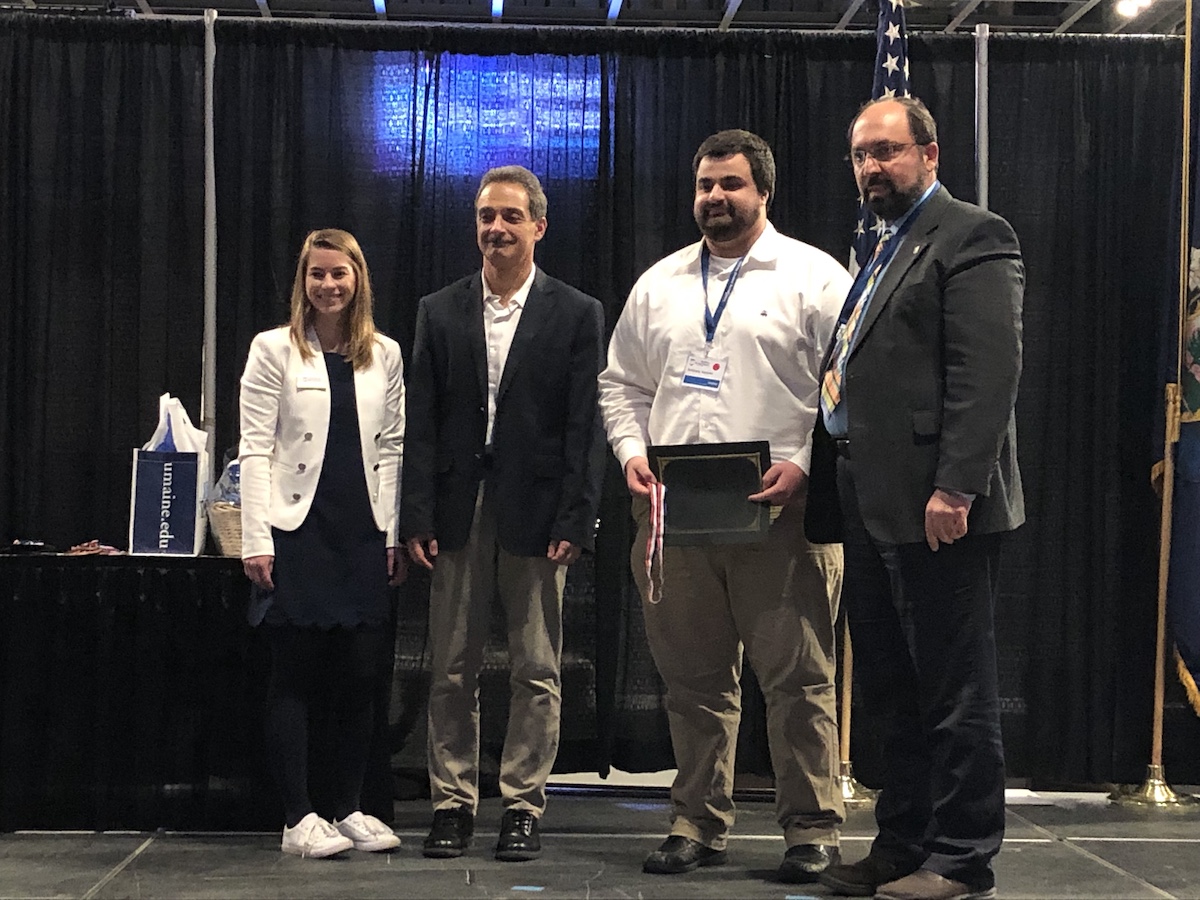
Graduate student Anthony Verzoni wins award at UMaine Student Symposium
Anthony Verzoni, a graduate student advised by Dr. Masoud Rais-Rohani, received an award for Initiative, Collaboration, and Creative Problem Solving at the UMaine 2019 Student Symposium. Verzoni’s work was presented in the Engineering and Information Sciences category.
Verzoni’s presentation was titled, “Origami-Inspired Design of Rapidly Deployable Structures” and it focused on the application of origami-inspired design to the creation of rapidly deployable shelters. Verzoni’s research found that origami-inspired designs can be used in the production of such shelters, and the base fold developed can be modified to create unique designs to conform to specific requirements.
The following is Verzoni’s abstract:
Origami-inspired design is a growing field with numerous engineering applications. The application of interest in this research is design of rapidly deployable shelters with rigid flat panels that must fold and unfold in a kinematically compliant fashion. Exploration of different design concepts inspired by the folding kinematics of origami has led to numerous novel shelter concepts. Altering panel size and shape yields shelter designs with varying volumetric capacities and some configurations that can be used in establishing a multi-unit shelter cluster. Thin or zero-thickness panels are initially used to model shelters as traditional origami is not concerned with finite thickness of each folding facet. Thick panels have a large influence on the connectivity of the shelter walls, which is addressed through nesting of the panels to accommodate proper folding kinematics. An analysis model is developed using the principle of virtual work to determine the loads required to erect a shelter of variable size. The analytical expressions developed using this method are validated using a rigid body dynamics solver. Torsion springs as a mechanical assist system are investigated to reduce the loads associated with shelter erection and lead to simple and intuitive erection processes. Preliminary structural analysis models for use in topology and sizing optimization of the shelters are developed and will be updated accordingly to satisfy design and kinematic requirements.
This material is based upon work supported by the US Army Combat Capabilities Development Command Soldier Center (CCDC-SC) (formerly known as NSRDEC) under Contract No. W15QKN-13-9-0001 and W911QY-18-C-0101.
Any opinions, findings and conclusions or recommendations expressed in this material are those of the author(s) and do not necessarily reflect the views of the CCDC-SC.
Approved for Public Release – CCDC-SC PAO#: U19-833
